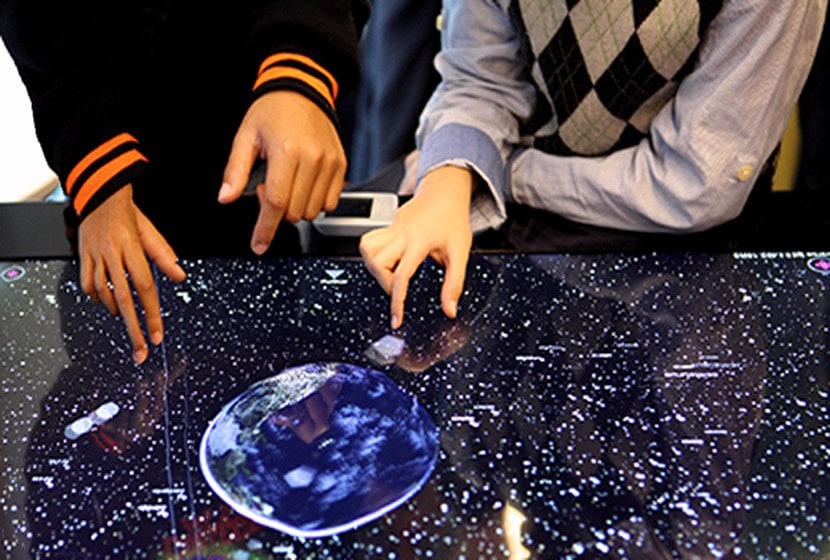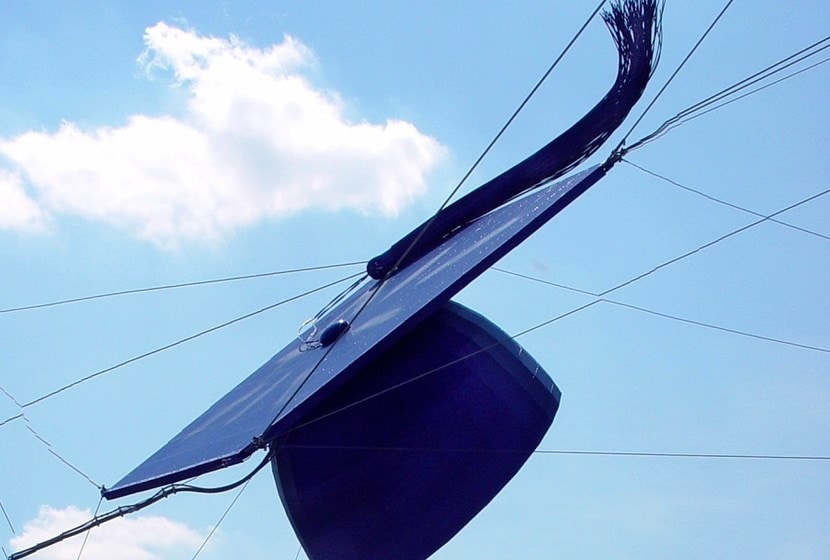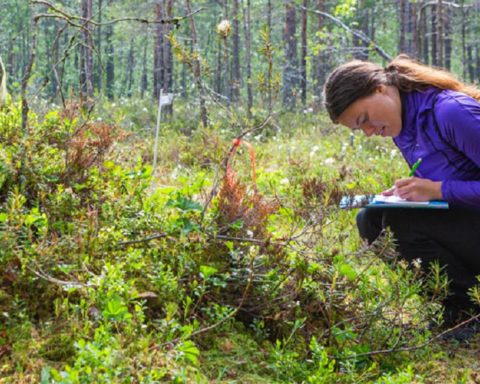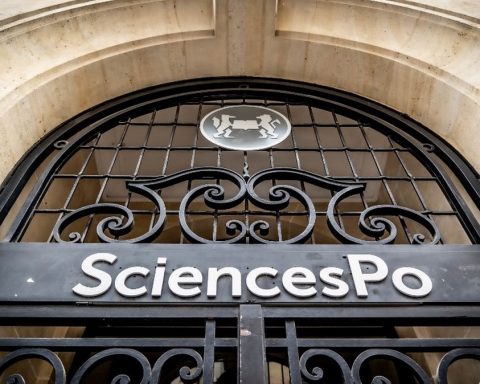At a time when the government is preparing a project to rebuild schools with an important promise for digital technology, and when technological advances are opening up new pedagogical perspectives, Microsoft France is inaugurating a unique place in Europe, open to all those involved in education (local authorities, schools, families, etc.): the immersive classroom in its premises in Issy les Moulineaux.
Photo ©Nathalie Seroux
At the end of November, Microsoft France inaugurated the immersive classroom, the first 100% digital learning space in Europe. Equipped with the latest technological advances and completely redesigned, the classroom aims to promote academic success by developing new pedagogical tools and new learning methods.
Today's program includes a course on the mystery of the construction of the pyramids. The students are gathered in the centre of the classroom, in a semi-dark room. Under their feet and on the walls, a map of Egypt is projected. Noah is in charge: he spots the pyramids of Giza at a glance and zooms in on them by spreading his arms.
With a wave of his hand, he transforms the map into a satellite photo and the class sets out in search of the remains of a construction ramp. With a gesture of the finger, the teacher freezes the picture on a wall and asks his students, stylus in hand, to annotate it. Once the exercise is over, a 3D animation is launched, revealing the enigma of the construction of the pyramids.
A science-fiction scenario in a classroom in 2025? Not at all, it's simply an example of the use of the immersive classroom, a life-size space dedicated to school in the digital age, which opened its doors on November 20th, on the Microsoft France campus in Issy-les-Moulineaux.
The school must adapt to new expectations and needs
Little flashback. Last April, Marc Prensky, the man behind the idea of digital natives, explained to us that current pedagogy does not take enough account of the new generations and their specificities.
He called for a new reflection on the contents of teaching but also on the way of teaching in order to "prepare young people for their future": "The school must go beyond the present world, i.e. the present. Today's school must resemble tomorrow's world. The school of tomorrow must therefore resemble the world of the day after tomorrow. Young people must be prepared for what is to come. We must not only teach the things that are useful for today's adults, but rather seek out and pass on the things that will be useful for tomorrow's adults. »
And "it's an emergency," continued education specialist Gavin Dykes. The school has not yet adapted to changing learning expectations and practices: classroom activities such as prolonged listening to a lecture while taking notes or working alone no longer correspond to what students expect, nor to what the world expects of them for their future professional and personal lives.
"We live in a world of silos where transmission and learning are not guaranteed" explained Kevin Bartlett, director of the International School of Brussels.
The key skills to be acquired have thus radically evolved: learning how to find information, manage a project, work in a team, establish good relationships, cooperate, manage and resolve conflicts is now fundamental.
According to the U.S. State Department of Labor, 65% of today's schoolchildren will, upon graduation, practice trades that have not even been invented yet.
From this discrepancy, between a school that still too often resembles that of 1882 and new generations of practices and pupils, arises a problem that is essential: boredom at school.
Eric Charbonnier, an education specialist at the OECD, pointed out that while students who enjoy studying perform 20% better, nearly 64% of students are bored at school. And more than 150,000 young people leave the school system without a diploma every year. So, how can we restore a taste for school and fight against academic failure?

A unique place for discovery, experimentation and training
It is to try to answer these fundamental questions that the immersive class opens its doors. Unique in Europe, this real classroom brings together the most innovative digital learning devices - Kinect technology, information immersion, experimentation and manipulation of 3D models, virtual experiments from real objects, tablets, serious games, digital textbooks... - to offer students and teachers a simple and fluid use of new technologies.
And above all to invent new uses for it. For this life-size laboratory of the pedagogy of today and tomorrow, developed in particular in partnership with the Compas research group, based at the Ecole Normale Supérieure, is not a showcase.
Its aim is to experiment in real format, with real students and real teachers in real classes, in order to be able to retain the most useful and effective innovative pedagogical tools for the school of tomorrow.
It is precisely in order to induce new uses that the class has been thought of as a flexible space, and thus break the logic of a fixed class. The architecture firm Fielding Nair International has thus created an open space, entirely modular to facilitate a new culture of knowledge and collaborative work, at the service of both teacher and student: the culture of the school is also reinvented thanks to new spaces.
A space at the service of the teacher and the student
"The school can no longer deny the screens," media sociologist Divina Frau-Meigs told us. And so much the better, because these tools would have a lot to offer: 78% of parents consider that digital technology can provide greater motivation for students, 65% think that it is the tool for a better understanding of lessons.
The same echo is heard from teachers, for whom digital technology appears to be the tool for more attractive lessons, more attentive and more active pupils. The word "tool" is essential. For digital technology is not a solution in itself: it can do nothing on its own, without the pedagogical commitment and the special relationship between teacher and pupil.
It is a tool at the service of teaching, to develop the desire to learn, to enrich learning, to broaden skills, to personalize rhythms or to better evaluate students.
"The fundamental mission of the school has not changed, it is still to form productive and creative citizens. But digital culture must be an integral part of the training of our students: the school must adapt," explains Edouard Rosselet, Inspector of the Academy.
That's what Pascal Cherbuin and Pascal Bihouée, physical science teachers, told us, for whom digital technology has changed the way they evaluate their students:
"You don't understand a student's difficulties through a grade. Faced with a bad grade, he either stops working or he hangs on in suffering," explained Pascal Cherbuin. And in either case, it's a failure.
This is why they have created digital tools to monitor their pupils individually, "to the point of removing the marks themselves" in favour of "a skills chart that gives a picture of the pupil" and which allows them to "better identify their strong and weak points" according to Pascal Bihouée.
Result? Students like it - "not having grades takes all the stress out" - and teachers can focus on student progress and core teaching skills.
It is within this logic of reinvention at the service of teachers and students that the immersive classroom is placed, based on educational scenarios developed by teachers and education specialists to offer more participatory, immersive and personalized teaching.
A life-size experience for all
Because it is by experimenting as widely as possible that new pedagogical practices will emerge, the immersive classroom will welcome students from all backgrounds, levels and disciplines: from primary school, but also from middle and high schools, and students who will come to teach there with their teachers.
The classroom, accessible free of charge, will also be a place of training for teachers, to enable them to create and innovate in their practices and uses of digital tools:
"It's a class, not just a place. The idea is to provide innovative educational facilities. And to let teachers benefit from these devices, to see how they can take advantage of them," explains Thierry de Vulpillières, director of education partnerships at Microsoft France.
More information : http://www.microsoft.com/france/education/classe-immersive/default.aspx
(Article published in RSLN, Regards sur le numérique - Nov 2012)
{Jacuzzi on}












